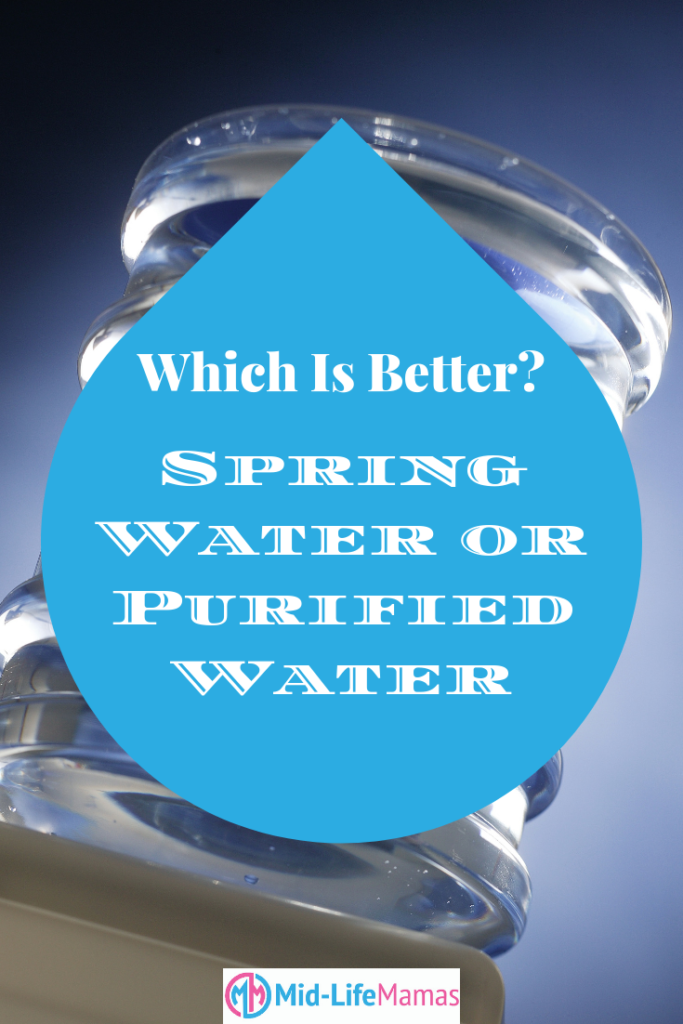
Which Is Better Spring Water or Purified Water? This is one of the many differences between myself and my husband. Not as big of a difference as our political views, but still a difference of opinion.
Any water is better than no water because your body uses water in every part of your body from your cells to your organs. It helps regulate your temperature and other bodily functions such as digestion. Since you lose water through breathing and sweating you need to replace it constantly.
If you’re paying a premium to buy spring water or purified water then it better be a lot better than the tap water that costs pennies on the gallon.
My favorite is Spring Water and my husband’s is Purified water. What’s Better To Drink Spring Water or Purified Water? Who’s right me or my husband?
Bottled Water
The US Food and Drug Administration (FDA) is responsible for regulating bottled water Just like the Environmental Protection Agency regulates municipal water a.k.a Tap Water. Spring Water and Purified Water are just two types of bottled water.
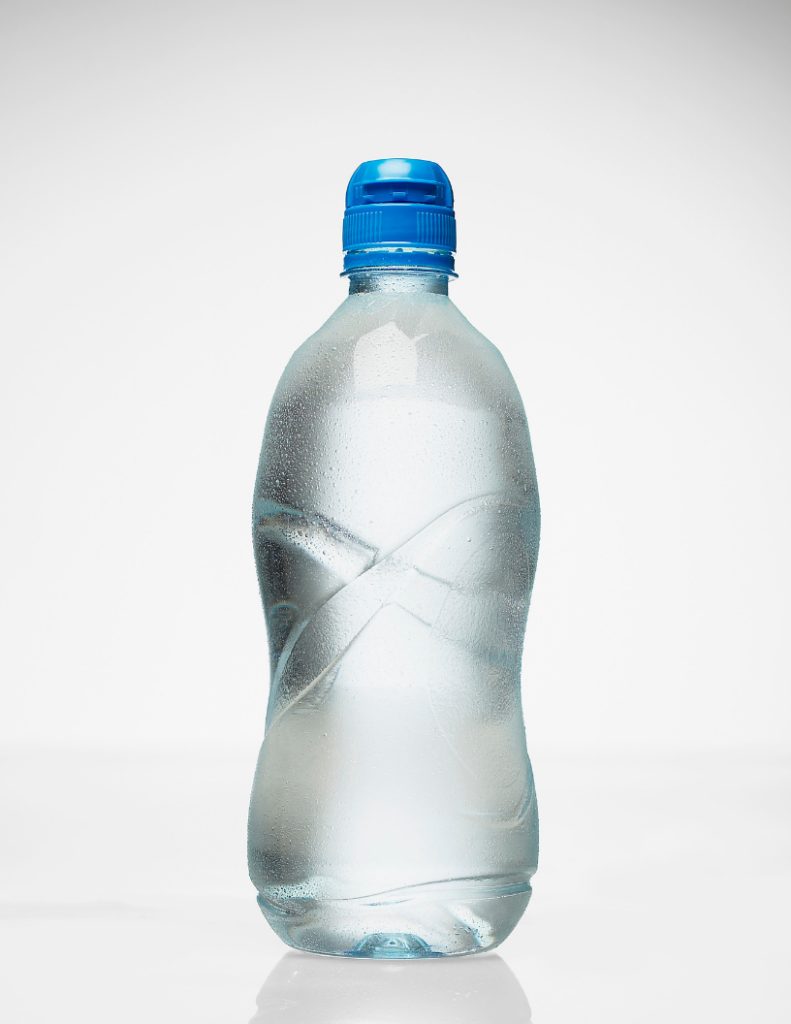
The FDA is tasked with protecting us through the Federal Food, Drug, and Cosmetic Act (FD&C). This makes bottlers responsible for producing safe, wholesome, and truthfully labeled food products including water.
Just like EPA has Maximum Contaminant levels (MCLs) for tap water, the FDA has Standards of Quality (SQLs) for all bottled water. Both set acceptable contaminant parameters for chemical, physical characteristics, microbial, and radiological contaminants.
Spring Water
I don’t know about you, but this is what I picture when I think about Spring Water.

But where does it actually come from?
To be labeled “spring water” it has to come from an underground formation and flow naturally to the surface. It also has to be collected only at the spring or through a borehole that taps the underground formation feeding the spring.
If some external force is used to collect the water through a borehole, the water must have the same composition and quality of the water that naturally flows to the surface.
Just because the water is coming from a spring does not mean that it’s clean. As a result many water bottling companies have additional treatment processes for the water before it get’s into the bottle (see treatment processes for purified water below). Remember no matter where it comes from it has to meet FDA’s SQL requirements.
Health Benefits of Spring Water
The main selling point for spring water is that it’s naturally occurring and includes minerals, but keep in mind some minerals may be removed during the bottling process.

Your body needs certain essential minerals such as calcium and magnesium to carry out many bodily functions, but the same minerals can also be found in a healthy diet. So if you’re getting the right minerals and enough of them in your food, then you may not prefer Spring Water over Purified water.
All minerals are not created equal and specific minerals are unique to the spring source. Not all minerals are good for you either and can be dangerous in high concentrations.
In order to find out exactly what’s in the Spring Water you’re purchasing go to the water company’s website. They will have their water quality report posted there. If they don’t, I highly recommend that you request one or stop purchasing the water.
The lab testing should be done by an independent certified lab so there is no bias.
Purified Water
We know spring water comes from springs, but where does purified water come from?
Purified water is water that comes from any source and is then purified. A common source of purified water in the U.S. is water that originates from municipal sources like the water that comes out of your tap.
Water is then purified by various treatment processes such as: distillation, reverse osmosis, Absolute 1 micron filtration or ozonation.
Treatment Processes
Distillation
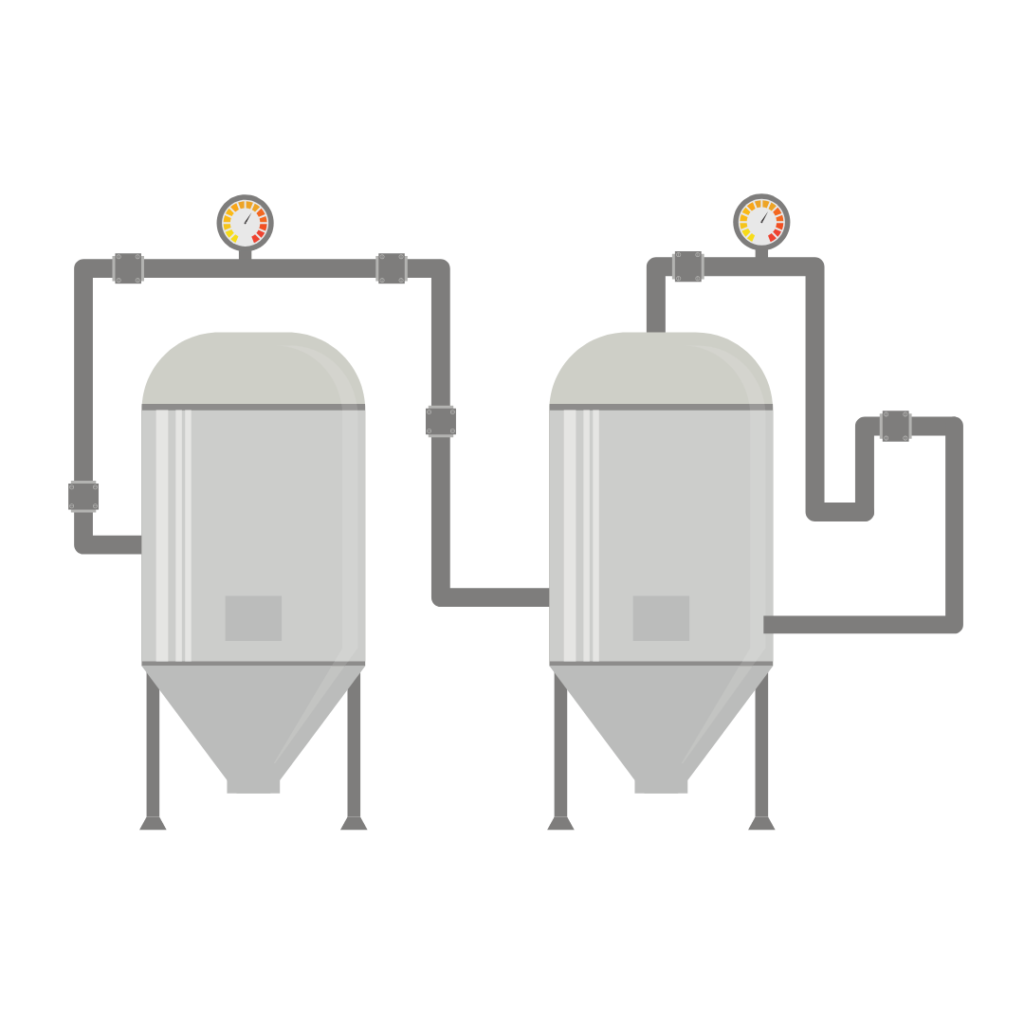
Is a water treatment process that heats the water and turns it into a vapor. This leaves approximately 99.9% of the the minerals behind. The vapors are then condensed back into water. This is the purest type of water because it’s very effective at removing all contaminates and chlorine, but not necessarily the healthiest.
Reverse Osmosis
Is a water treatment process that forces water through membranes to remove contaminates. This is one of the most effective treatment methods for removing metal ions such as lead, copper and chromium. The process can also reduce arsenic, magnesium and potassium which carbon filters cannot remove effectively.
Absolute 1 Micron Filtration
These filter systems remove particles larger than .00004 inches in size. To give you an idea of how small that is you can compare it to a human red blood cell which is about 5 microns across.
These filters sizes are so small they remove microscopic bacteria such as Cryptosporidium, a parasitic pathogens out of the water which can cause gastrointestinal illnesses.
Ozonation
Is a common type of treatment for all types of bottled water using ozone to disinfect the water. Ozone is used instead of chlorine as the antimicrobial agent. A definite benefit since chlorine can significantly impact the taste and smell of water.
Chlorine is also known to kill the good bacteria in your digestive system along with the bad.
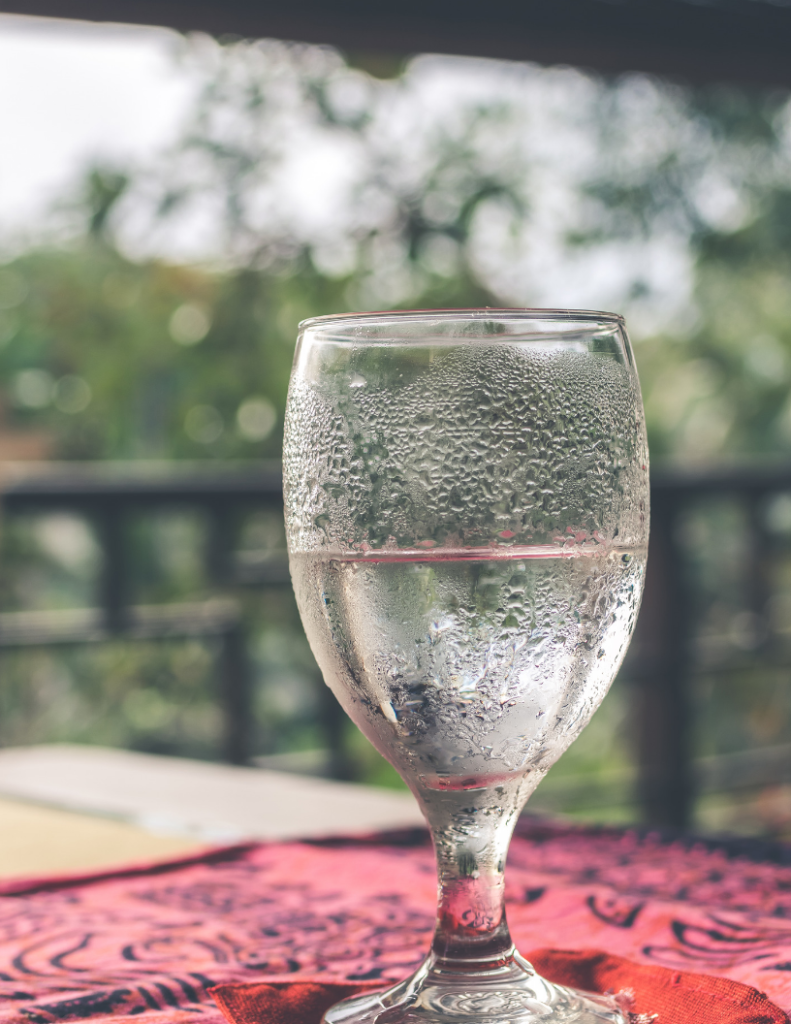
What’s Left In Water After It’s Purified
Pure water that’s what. Sounds great right? Actually just like a lot of other things that we do to manipulate “mother nature’s” gifts, we’re not always doing the best things for our bodies or the environment.
Removing hazardous chemicals like heavy metals, pesticides, herbicides, chlorine, fungus, parasites, other toxins and bacteria is so important to our health. But what about the minerals that we’re removing and potentially altering the natural pH balance of water?
De-Mineralized Water
There are essential minerals that your body needs in the correct amounts such as calcium, potassium, sodium, chloride, magnesium, zinc, chromium and fluoride.
You probably don’t think of water as a source of minerals, but it actually is. Not having the correct amount of essential minerals in your water can lead to serious health problems.

If you’re eating a healthy diet you may be getting all of the essential minerals that your body needs from the food that you’re eating. Unfortunately, the common diet for the average person in the U.S. is far from healthy.
Calcium and Magnesium are great examples of essential minerals and deficiencies have been associated with an increased risk of fracture, preterm birth and heart disease.
Fortunately some water companies add minerals back into the water after it’s been purified.
Just like with Spring Water, the only way to know exactly what’s in your bottled water is to go to the bottling company’s website and look at their Water Quality Report and see if they’re adding anything to it.
Health Benefits of Purified Water
All purified water is different because of the source and the treatment processes involved. So the total benefits really depend on the brand of water you’re buying.
But If you’re an opponent to fluoride in your water then purified water is a good choice.
Chlorine is removed from purified water so not only does it taste better, but the good bacteria in your digestive system will be healthier and happier if you’re used to chlorinated water.
How To Buy
Bulk
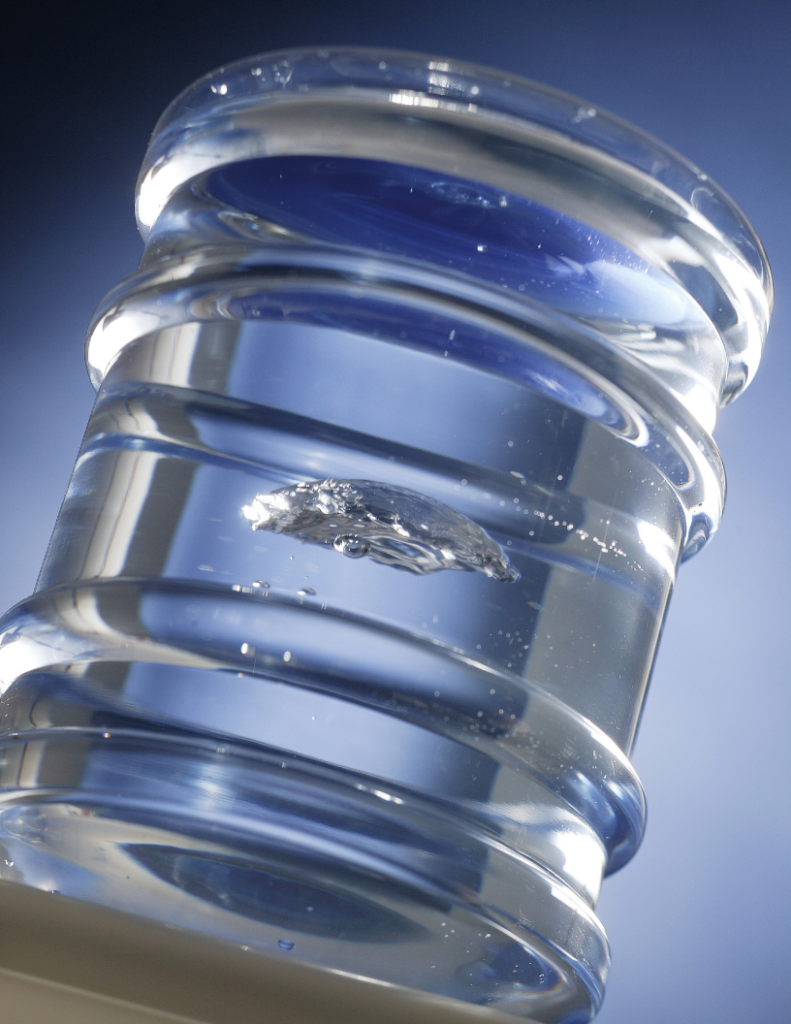
Buy in bulk and do your part to help the environment. More than 60 million plastic bottles are being thrown away every day. They end up in landfills, incinerators, streets, parks and waterways. So no matter what kind of bottled water you buy please do your part for the environment and make sure you buy in bulk containers. Try to avoid single use plastic cups to drink it as well.
BPA Free
Bisphenol A (PBA) may be a chemical component of plastic water bottles. BPA has been linked to fertility problems, heart disease and cancer.
However, a lot of water bottles are now BPA free. When purchasing any plastic make sure that the bottles are labeled BPA free.
Which Is Better Spring Water or Purified Water?
So who’s right? Me or my husband?
I hate to admit it but we’re both right. It really depends on which tastes better to you and what’s in, and not in the water. Besides having to meet government safety standards all spring water and all purified water is different.
You need to do your homework and get a copy of the bottlers water quality report. Go to the bottled water company’s website and also look at their process to see what they’re taking out of the water, what there leaving in and what they’re adding.
References
https://www.fda.gov/ForConsumers/ConsumerUpdates/ucm203620.htm https://www.ncbi.nlm.nih.gov/pmc/articles/PMC1495189/
Drinking Purified Water: Everything You Need To Know (Pros, Cons & More)

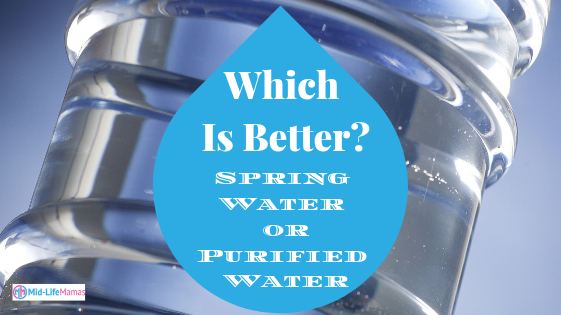


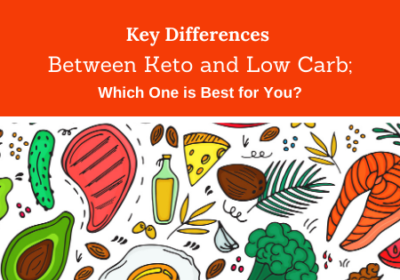
Great article thanks for the tip to check the websites! Spring water 💧 rocks.
Oh yeah!! My next step however is to get a home treatment system.
Great article to raise awareness, and a lot of good info. I would add that bottled water is not regulated well, so oftentimes you are getting no better than tap water. This is also a source of dispute between me and my husband. He loves bottled water, but I try to avoid it altogether. When he insists, I have him get the r.o. water even though it is stripped of minerals. A few other things to note. Bpa-free doesn’t mean a whole lot since the substance is substituted with Bps, an equally harmful chemical. Personally, I would try to get a reusable stainless steel or glass bottle and refill it with filtered water (using a berkey or other thorough filter system) at home, whenever possible.
I know what you mean about the BPA free, but I didn’t find any studies about it. If you know of one I’d love to read it. I’m looking to get a home system, maybe I’ll try a Berky.